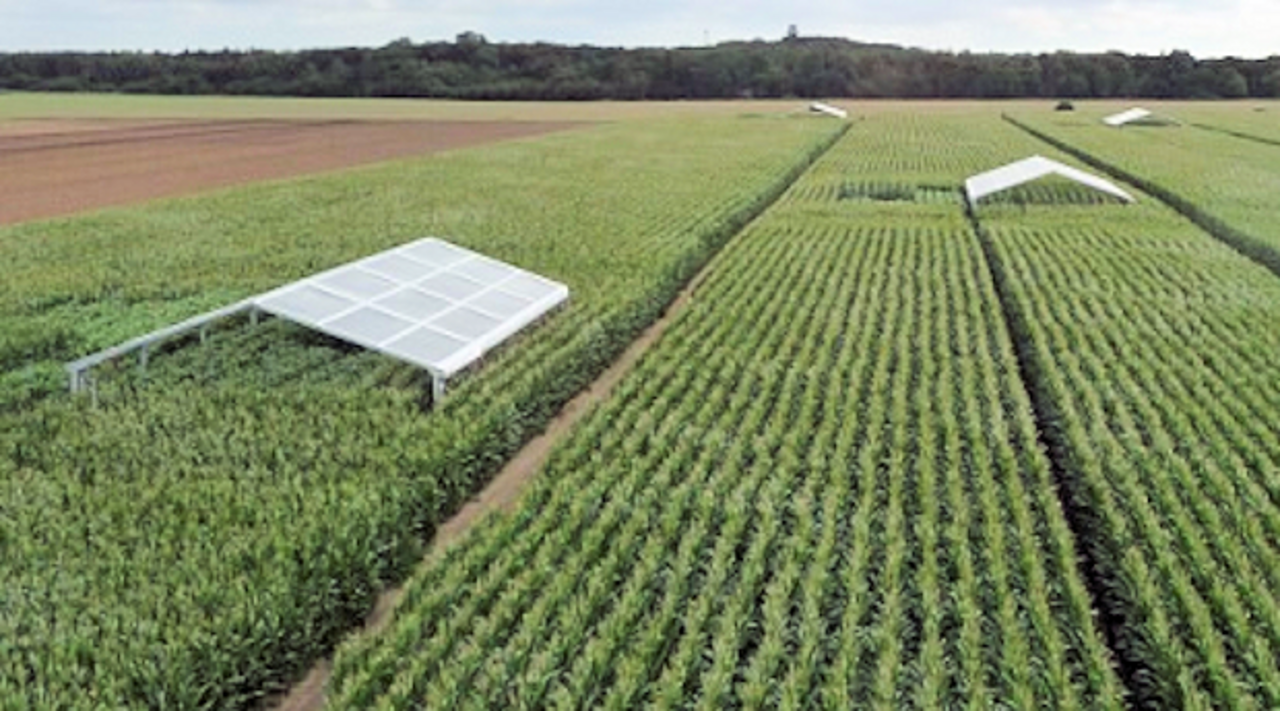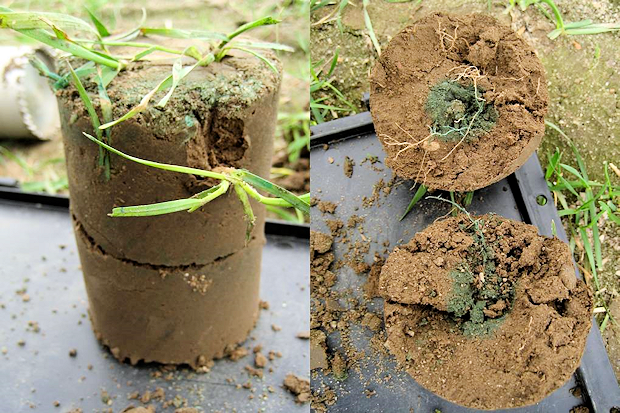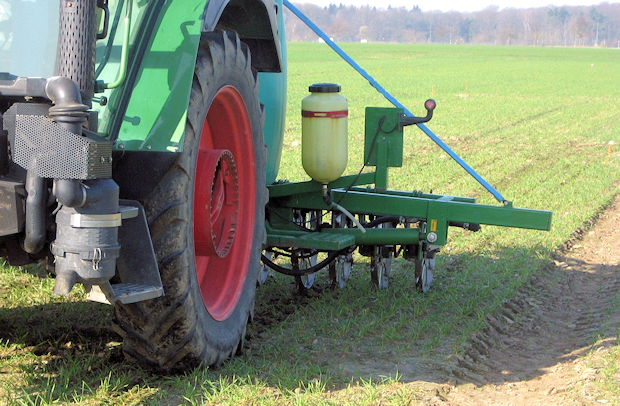Project
Effect of summer drought and fertilizer application techniques on emission of greenhouse gases from arable soils

What is the impact of increasing summer drought on greenhouse gas emissions from arable soils? Can N2O fluxes from arable soils be lowered by fertilizer injection? We tackle these questions in two field studies in Lower Saxony.
Background and Objective
In the next decades, summer drought is supposed to become more frequent in Germany/Europe due to climate change. For agriculture, this means not only direct impacts on plants, like drought stress, but also a change in soil processes. Soil respiration and the associated emission of carbon dioxide (CO2), methane (CH4) turnover as well as production and consumption of nitrous oxide (N2O) by nitrification and denitrification are also controlled by soil moisture and temperature.
Another important parameter controlling the N2O turnover is the source of nitrogen and the manner of fertilization in agricultural soils. Injection of ammonium fertilizer (CULTAN, controlled-uptake long term ammonia nutrition) creates highly concentrated ammonium depots in the soil which is assumed to prevent transformation of fertilizer-N by nitrification and denitrification and thus to reduce emissions of N2O. Studies dealing with the impact of pure CULTAN fertilization on greenhouse gas emissions are missing to date.


Target Group
Science, Federal Ministry of Food and Agriculture, associations of agriculture and environmental protection, fertilizer industry, manufacturers of agricultural machinery
Approach
The project is structured in two sub-projects:
In the first project, we study the impact of summer drought (induced by rain exclusion) on the exchange of greenhouse gases (CO2, CH4, N2O) between the soil surface and the atmosphere in sorghum and corn plantations. During two years, the emission of greenhouse gases are measured with closed chambers in experiments on different soils. Summer drought is induced through periodic rain exclusion by transparent roofs.
The second sub-project concentrates on nitrogen turnover in the soil in and beneath injected ammonium depots and the impact of this fertilization technique on the emission of nitrous oxide. During two years, the emission of greenhouse gases are measured with closed chambers in experiments on different soils. Tracer experiments with 15N-labelled ammonium fertilizer are used to identify sources of N2O in the soil. Microcosm experiments with continuous monitoring of gas fluxes are used in the laboratory to concentrate on the impact of manipulated soil moisture on N2O production during nitrification and denitrification and to study the dynamics of the ammonium depots after application.
Our Research Questions
Concerning the first project:
- What is the impact of decreasing summer precipitations on the emission of greenhouse gas fluxes from arable soils
- Which are the immediate effects during the phase of reduced summer precipitation and which aftereffects occur until the next summer?
- How are the relevant controls of greenhouse gas emissions like water content, mineral nitrogen and soil temperature affected?
Concerning the second project:
- What is the impact of CULTAN fertilization on N2O fluxes from cereal crops
- What is the fraction of fertilizer-derived N2O in the total emission from soil?
- How is the temporal and spatial change of ammonium and nitrate N in the vicinity of the fertilizer depot during the cropping period?
- What is the impact of ammonium and nitrate contents in the fertilizer depot on N2O processes?
Thünen-Contact

Involved Thünen-Partners
Involved external Thünen-Partners
- Julius Kühn-Institut - Bundesforschungsinstitut für Kulturpflanzen (JKI)
(Quedlinburg, Braunschweig, Groß Lüsewitz, Kleinmachnow, Deutschland)
Funding Body
-
Federal Ministry of Food und Agriculture (BMEL)
(national, öffentlich)
Duration
7.2010 - 11.2014
More Information
Project status:
finished
Publications
- 0
Deppe M, Well R, Giesemann A, Spott O, Flessa H (2017) Soil N2O fluxes and related processes in laboratory incubations simulating ammonium fertilizer depots. Soil Biol Biochem 104:68-80, DOI:10.1016/j.soilbio.2016.10.005
- 1
Deppe M, Well R, Kücke M, Fuß R, Giesemann A, Flessa H (2016) Impact of CULTAN fertilization with ammonium sulfate on field emissions of nitrous oxide. Agric Ecosyst Environ 219:138-151, DOI:10.1016/j.agee.2015.12.015
- 2
Deppe M, Well R, Giesemann A, Kücke M, Flessa H (2013) Reducing fertilizer-derived N2O emission: Point injection vs. surface application if ammonium-N ferilizer at a loamy sand site. Geophys Res Abstr 15:12000

![[Translate to English:] Logo des Bundesministerium für Ernährung und Landwirtschaft](/media/allgemein/logos/BMEL_Logo.svg)